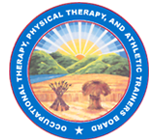 Karen Jacobs EdD, OTR/L, CPE, FAOTA[/caption]
Karen Jacobs EdD, OTR/L, CPE, FAOTA[/caption]
ERI is honored to welcome Karen Jacobs as a new faculty member, and thrilled that she will be speaking at this year’s annual conference:
Therapies in the School
November 16-17, 2017 – Framingham, MA
Karen Jacobs is a clinical professor of occupational therapy and the program director of the distance education post-professional occupational therapy programs at Boston University. She has expertise in the development and instruction of on-line graduate courses. In addition to being an occupational therapist, Jacobs is also a certified professional ergonomist (CPE). She has a private practice in ergonomics.
Jacobs earned her BA at Washington University in St. Louis, her MS at Boston University, and her doctoral degree at the University of Massachusetts.
Dr. Jacob’s research examines the interface between the environment and human capabilities. In particular, she examines the individual factors and environmental demands associated with increased risk of functional limitations among populations of university and middle school–aged students, particularly in notebook computing, backpack use, and games such as WiiFit. Most recently, she is co-developing, with Dr. Nancy Baker at the University of Pittsburgh, the Telerehabilitation Computer Ergonomics System (tele-CES) for computer users with arthritis. The tele-CES is a remote systematic ergonomics program aimed a substantially reducing work disability among workers with any type of arthritis.
Jacobs is the founding editor-in-chief of the international, interdisciplinary peer reviewed journal WORK: A Journal of Prevention, Assessment and Rehabilitation, which celebrated its 20th anniversary in 2010.
Jacobs is a past president and vice-president of the American Occupational Therapy Association (AOTA). She is a 2005 recipient of a Fulbright Scholarship to the University of Akureyri in Akureyri, Iceland; the 2009 recipient of the Award of Merit from the Canadian Association of Occupational Therapists (CAOT); and recipient of the Award of Merit from the American Occupational Therapy Association in 2003.
Karen’s dynamic session at Therapies in the School 2017:
Using the iPad and Apps as Cognitive Support Technology in the Classroom
This hands-on workshop will discuss the iPad and Apps as cognitive support technology that can be used effectively in the classroom. Participants will use case studies to facilitate the selection of appropriate Apps to address cognitive challenges.
Please click here for a brochure and detailed information
]]>

 We would like to honor all our community of Neonatal Therapists and join NANT (National Association of Neonatal Therapists) to celebrate your dedication to premature and sick infants and their families and to acknowledge the work you do to improve your patients outcomes.
We would like to honor all our community of Neonatal Therapists and join NANT (National Association of Neonatal Therapists) to celebrate your dedication to premature and sick infants and their families and to acknowledge the work you do to improve your patients outcomes.
